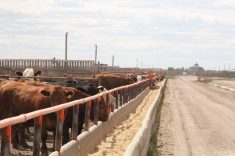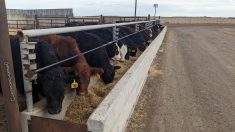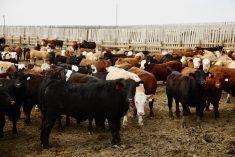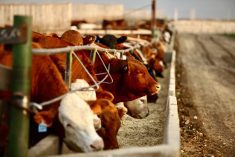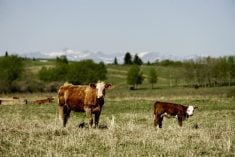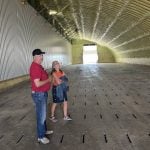The hay is baled and stacked in the yard. Now’s the time to decide how to feed it. If the current method wastes a significant amount of feed, it might be time to re-evaluate your feeding system.
Bale grazing has become more popular in recent years. Before an entire feeding system is switched over to bale grazing, there must be an awareness of net gains versus net losses.
A Lakeland Applied Ag Research study showed about 20 per cent of the feed wasn’t consumed by the animals, says Barry Yaremcio, ruminant nutritionist. “It’s a big loss, but the argument on the other side is it’s not really wasted.”
Read Also
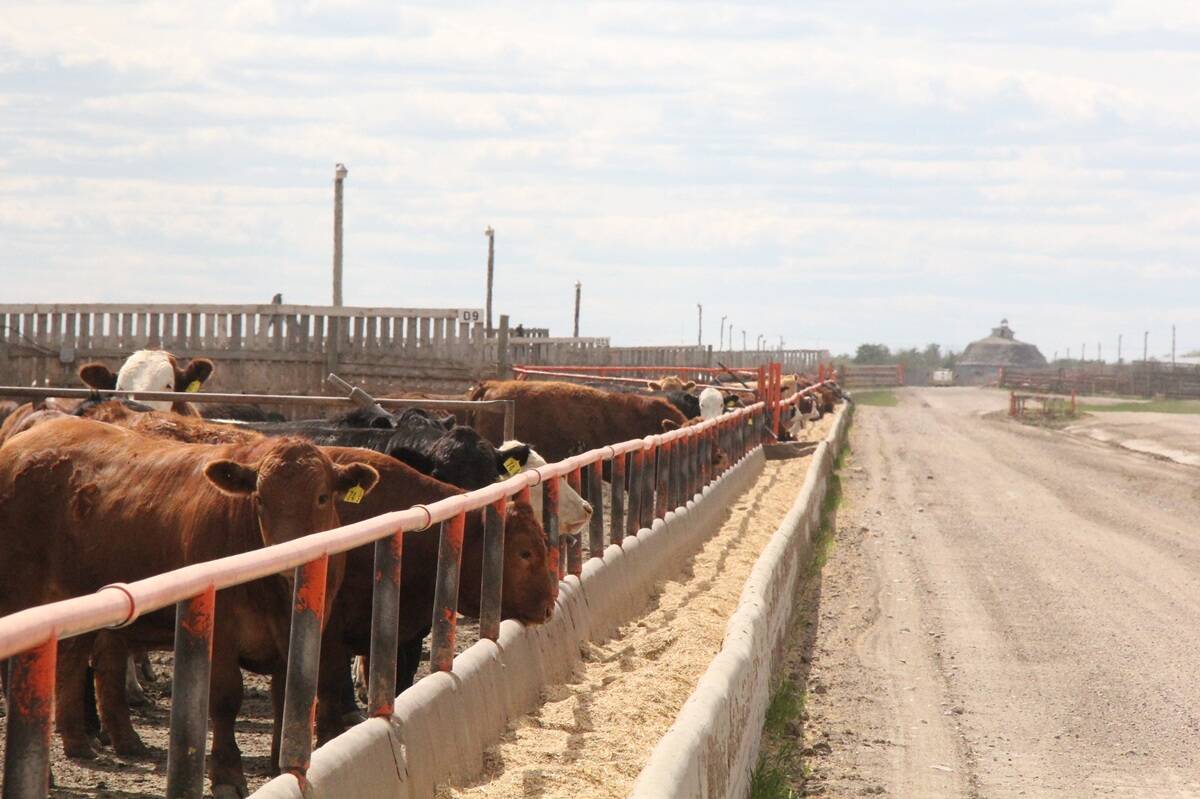
Unwinding the fibre in feedlot cattle diets
Research into how barley rolling method and undigestible NDF levels affect animal performance and digestive health in finishing diets
The theory behind bale grazing is that “waste” from the bale is nutrients going back into the soil. Bale “waste” also provides mulch for the pasture. Selecting the optimum site for bale grazing is also key. Poor-performing pastures or pastures with poor soils are going to benefit most.
“If you are bale grazing on pastures, that thatch will reduce temperatures, and help conserve moisture,” Yaremcio says. Although there is money lost from forage not being consumed, the bonus is the improvement to the land — an increase in water retention, reduction in soil temperature and increase in soil nitrogen retention.
“What you’re using the bale grazing for is to replenish the nutrients available for next year’s plants,” Yaremcio says.
Feeding round bales out of bale feeders (ring-style, cone-style or multi-bale feeders) is also popular. One positive of these feeder styles, especially for smaller herds or groups, is you don’t need to start a tractor daily to feed — the feeder is filled on demand.
But not all feeders are created equal. With bale feeders the amount of feed waste involved “is anywhere from 3.5 to 14.6 per cent, depending on the style of feeder you have,” Yaremcio says. The ring-style feeders had the most wasted due to their design. The bale fits snugly within the ring, so when the cow grabs a bite of hay with her mouth, she grabs, bites and pulls back. When she pulls back, some hay drops on the ground and is lost.
To minimize waste, a cone-style bale feeder is a better option. Yaremcio explained this type of feeder is about 12 inches wider than the outside of the bale, with some rungs that go down at a slant, holding the bale in about a foot inside the feeder.
“They have to turn their head to get their head into the feeder, straighten out and eat. If they move to get out, the feed drops inside the feeder and is usable.” Having that space where the cow can put her head in and eat helps with feed loss. “Anything to prevent the cows from backing out while eating saves a lot of feed.
“One thing you will find different when you feed on the ground versus a bale feeder is the amount of material that is lost.” The waste of unrolling hay on the ground adds up to about 12.3 per cent, according to Yaremcio. “If there is feed on the ground, cows cannot pick up a particle size less than three-quarters of an inch.” Even though it will seem cows can “vacuum” grain off the ground, when it comes to hay, they don’t. The only issue with the cows not eating the smaller, fine particle parts of hay, is it’s usually the high-quality stuff — flowers, leaves and fine stems — that gets left behind.
“It’s not just the percentage of physical waste that occurs, it’s the greater loss of quality,” Yaremcio says. “If you look at what is being lost, it’s the ‘gravy,’ the really good stuff.”
The benefit of unrolling bales comes in the cost of delivering feed — not much equipment is needed, nor is much fuel used.
If you’re using a bale processor (one that rotates and shreds the bales), you can mitigate waste. If you feed on the ground, you will see around 19.2 per cent waste. By using the same delivery method, but grinding the bales into troughs or bunk feeders, you’ll have zero waste.
“Any feed that gets into the bunk gets cleaned up,” Yaremcio says. The cows can access all the feed inside the bunk, whether it has an open bottom and is on stubble or if the bunk has a floor in it.
“Depending on the operator you might have two to three per cent loss by having feed hit the side of the feeder and falling on the outside.” It is a good idea, Yaremcio says, to use both the bale processor and the trough or bunk feeder. If you do the math, at eight cents a pound for hay, it works out to $64 a cow for the value of feed that’s wasted based on a 175-day feeding period. Not only are you eliminating waste, feeding into a bunk, but you are also maintaining forage quality.
“The one thing I do like about using a portable bunk feeder in the pasture for the bale processor is it can feed in one area for five days to a week, then you can pull it to another part of the field, and feed there. You are distributing the manure,” Yaremcio says. You can move the bunks and target areas of poor soil, such as hilltops, sandy or clay areas. Adding manure to these poor soils helps increase soil fertility. Distributing manure across fields eliminates manure-hauling expenses. It doesn’t take many bunks either. A bunk that is five feet wide by 28 feet long can hold a 1,400-pound bale and feed 40 cows.
Waste has a cost, and once you calculate that cost, you can better evaluate decisions around feeding.
Jill Burkhardt, her husband Kelly and their three children own and operate a mixed farm near Gwynne, Alta. Originally hailing from Montana, Burkhardt has a range management degree from Montana State University.



